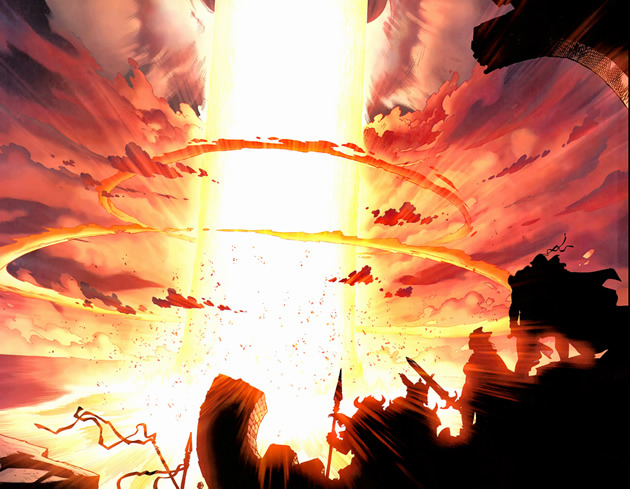Clean Energy Under Siege: A Boom Market Faces Unexpected Threats

Table of Contents
Geopolitical Instability and Supply Chain Disruptions
The transition to clean energy is not without its geopolitical complexities. The production of clean energy technologies relies heavily on specific minerals, creating vulnerabilities to global supply chains.
Resource Dependence and Price Volatility
The manufacturing of many clean energy technologies is heavily reliant on the extraction and processing of critical minerals like lithium (for batteries), cobalt (for batteries and magnets), and various rare earth elements (for magnets and electronics in wind turbines and solar panels). This dependence presents several challenges:
- Geopolitical Risks: Many of these critical minerals are concentrated in specific regions, often politically unstable. For example, the Democratic Republic of Congo is a major source of cobalt, yet faces ongoing conflict and human rights concerns. China dominates the processing and refining of many rare earth elements, creating a potential chokepoint in the supply chain.
- Price Volatility: Supply chain disruptions caused by geopolitical instability, natural disasters, or unexpected policy changes can lead to significant price volatility in these critical minerals. This volatility impacts the viability of clean energy projects, making them less financially attractive and potentially delaying deployment.
- Ethical Sourcing: The extraction of these minerals often involves human rights abuses and environmental damage. Ensuring ethical and sustainable sourcing is crucial for maintaining the integrity and reputation of the clean energy industry.
Trade Wars and Protectionist Policies
International trade disputes and rising protectionist policies pose another significant threat. Governments may impose tariffs or trade restrictions on clean energy technologies and components to protect domestic industries.
- Increased Costs: Tariffs on solar panels, for instance, have demonstrably increased the cost of solar energy projects, making them less competitive compared to fossil fuel alternatives.
- Supply Chain Bottlenecks: Restrictions on the import or export of critical components can create bottlenecks in the supply chain, delaying project completion and hindering the overall deployment of clean energy infrastructure.
- Reduced Competition: Protectionist policies can limit competition and innovation in the clean energy sector, potentially stifling technological advancements and slowing the pace of the energy transition.
Regulatory Hurdles and Permitting Delays
Navigating the regulatory landscape presents a significant challenge for clean energy developers. Complex permitting processes and policy uncertainty can create delays and increase costs.
Complex Permitting Processes
The process of obtaining permits for renewable energy projects (wind farms, solar farms, hydropower plants) can be lengthy, complex, and costly.
- Bureaucracy: Multiple agencies and levels of government may be involved, leading to bureaucratic delays and administrative hurdles.
- Environmental Impact Assessments: Thorough environmental impact assessments are essential but can be time-consuming and resource-intensive.
- Community Opposition: Local opposition to projects due to concerns about visual impact, noise pollution, or potential environmental effects can create significant delays and even lead to project cancellations.
Policy Uncertainty and Shifting Regulations
Changes in government policies and regulations can create uncertainty for investors and developers.
- Investment Risks: Frequent shifts in renewable energy subsidies, carbon pricing mechanisms, or feed-in tariffs can deter investment and make it difficult to plan long-term projects.
- Policy Inconsistency: Inconsistent policy frameworks across different jurisdictions can fragment the market and hinder the development of a unified clean energy infrastructure.
- Regulatory Uncertainty: Lack of clear regulatory guidelines can create uncertainty and discourage innovation.
Grid Infrastructure Limitations and Intermittency Challenges
The intermittent nature of renewable energy sources, such as solar and wind power, presents challenges for grid management and requires significant investments in upgrading infrastructure.
Outdated Grid Infrastructure
Existing electricity grids, largely designed for centralized fossil fuel power plants, are often not equipped to handle the fluctuating nature of renewable energy sources.
- Transmission Capacity: Upgrading transmission lines and substations is crucial to efficiently transport renewable energy from generation sites to consumption centers.
- Grid Modernization: Investing in smart grids with advanced monitoring and control systems is necessary to optimize grid stability and manage intermittency.
- Infrastructure Investments: The scale of infrastructure investment required is substantial and needs long-term planning and coordinated efforts between governments and utilities.
Managing Intermittency
The intermittent nature of solar and wind energy necessitates effective solutions for managing fluctuations in power generation.
- Energy Storage: Investing in energy storage technologies, such as battery storage systems, pumped hydro, and compressed air energy storage, is critical to ensure a reliable and consistent power supply.
- Grid Management Strategies: Advanced grid management systems and demand-side management strategies can help balance supply and demand and integrate renewable energy more effectively.
- Predictive Modelling: Improved weather forecasting and advanced grid modeling techniques can aid in anticipating and managing intermittency more efficiently.
Public Perception and Acceptance
Public perception and acceptance play a critical role in the successful deployment of clean energy projects.
Misinformation and Public Opposition
Misinformation campaigns and public opposition, often fueled by concerns about visual impact or potential health effects, can delay or even prevent clean energy projects from being realized.
- Addressing Concerns: Open communication, transparent information sharing, and addressing legitimate concerns about visual impact, noise pollution, or potential environmental effects are essential to garnering public support.
- Community Engagement: Early and meaningful engagement with local communities can help build trust and address concerns before they escalate into opposition.
- Combating Misinformation: Actively combating misinformation and promoting accurate information about the benefits of clean energy is crucial for building public acceptance.
Lack of Public Awareness and Education
A lack of public awareness and understanding of the benefits of clean energy can also hinder its adoption.
- Educational Campaigns: Public awareness campaigns can effectively highlight the economic and environmental benefits of clean energy, including job creation, reduced pollution, and energy independence.
- Promoting Benefits: Emphasizing the advantages of clean energy, such as reduced reliance on fossil fuels, lower carbon emissions, and improved air quality, can increase public support.
- Accessible Information: Providing readily accessible and understandable information about clean energy technologies and policies is crucial for fostering public understanding and engagement.
Conclusion
While the clean energy sector presents immense promise for a sustainable future, it is undeniably under siege from various interconnected challenges. These include geopolitical instability impacting supply chains, complex regulatory hurdles, grid infrastructure limitations, and the need for increased public awareness and acceptance. Addressing these threats effectively requires concerted and collaborative efforts from governments, the private sector, and the public. Investing in resilient supply chains, streamlining permitting processes, upgrading grid infrastructure, fostering public support through education and transparency, and promoting ethical sourcing are critical steps to ensure the continued growth and success of the clean energy revolution. Let's work together to overcome these obstacles and unlock the full potential of renewable energy for a sustainable and secure future. Embrace the clean energy transition and help build a greener tomorrow.

Featured Posts
-
 Stay Safe Strong Wind And Severe Storm Advisory
May 20, 2025
Stay Safe Strong Wind And Severe Storm Advisory
May 20, 2025 -
 Mainz 05 Leverkusen Complete Matchday 34 Report And Highlights
May 20, 2025
Mainz 05 Leverkusen Complete Matchday 34 Report And Highlights
May 20, 2025 -
 Red Bulls Insight And Schumachers Comeback A Case Study In Missed Opportunities
May 20, 2025
Red Bulls Insight And Schumachers Comeback A Case Study In Missed Opportunities
May 20, 2025 -
 Le Meurtre De Federico Aramburu Deux Suspects D Extreme Droite Toujours Recherches
May 20, 2025
Le Meurtre De Federico Aramburu Deux Suspects D Extreme Droite Toujours Recherches
May 20, 2025 -
 Get The Answers Nyt Mini Crossword Hints For April 18 2025
May 20, 2025
Get The Answers Nyt Mini Crossword Hints For April 18 2025
May 20, 2025
Latest Posts
-
 Wwes Tony Hinchcliffe Segment A Look At The Backstage Fallout
May 20, 2025
Wwes Tony Hinchcliffe Segment A Look At The Backstage Fallout
May 20, 2025 -
 Monday Night Raw Rollins And Breakkers Wwe Bullying Of Sami Zayn
May 20, 2025
Monday Night Raw Rollins And Breakkers Wwe Bullying Of Sami Zayn
May 20, 2025 -
 Analysis Why Tony Hinchcliffes Wwe Segment Failed To Connect
May 20, 2025
Analysis Why Tony Hinchcliffes Wwe Segment Failed To Connect
May 20, 2025 -
 Baggelis Giakoymakis Mathimata Apo Mia Tragodia Gia Tin Prostasia Tis Anthropinis Aksias
May 20, 2025
Baggelis Giakoymakis Mathimata Apo Mia Tragodia Gia Tin Prostasia Tis Anthropinis Aksias
May 20, 2025 -
 Wwe Raw Sami Zayn Under Siege By Rollins And Breakker
May 20, 2025
Wwe Raw Sami Zayn Under Siege By Rollins And Breakker
May 20, 2025
